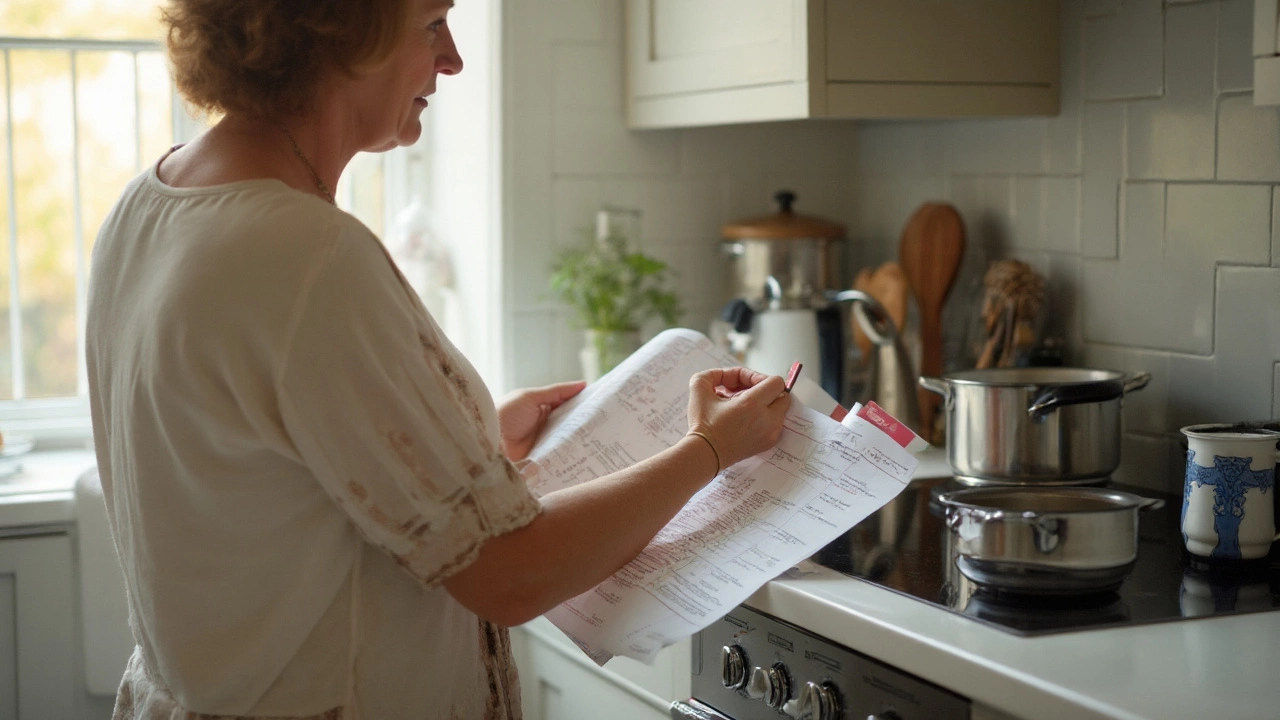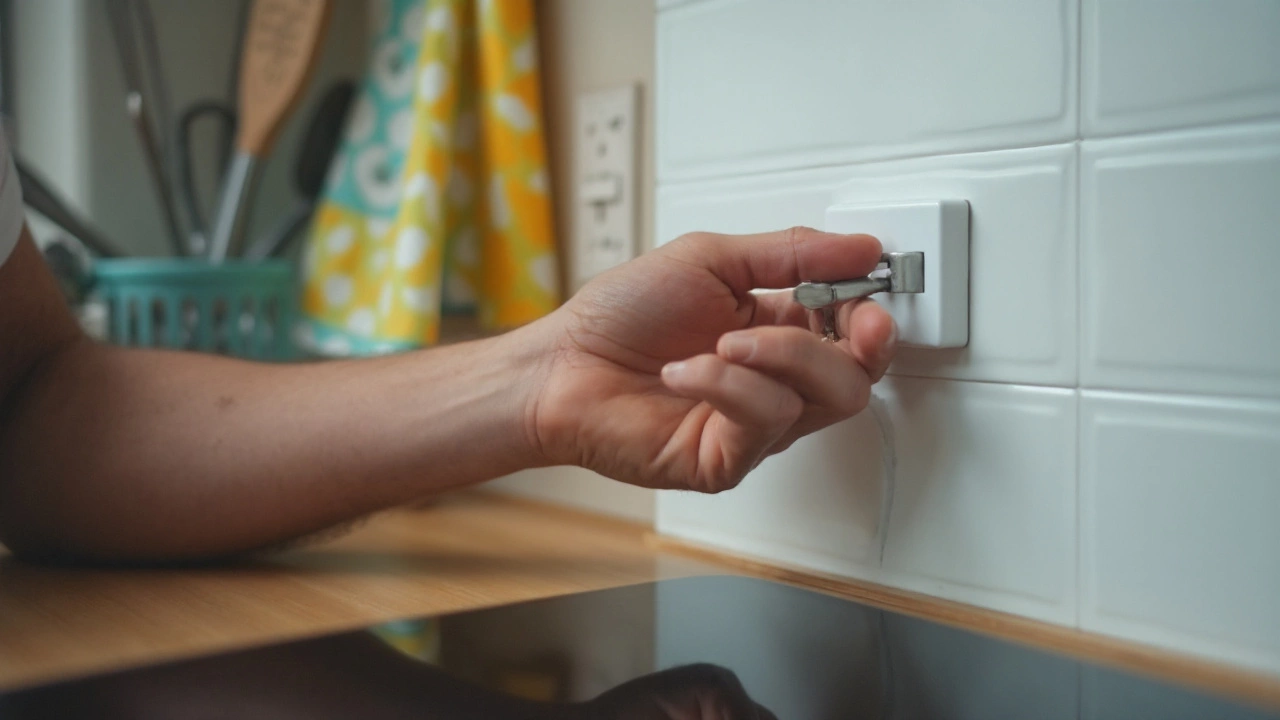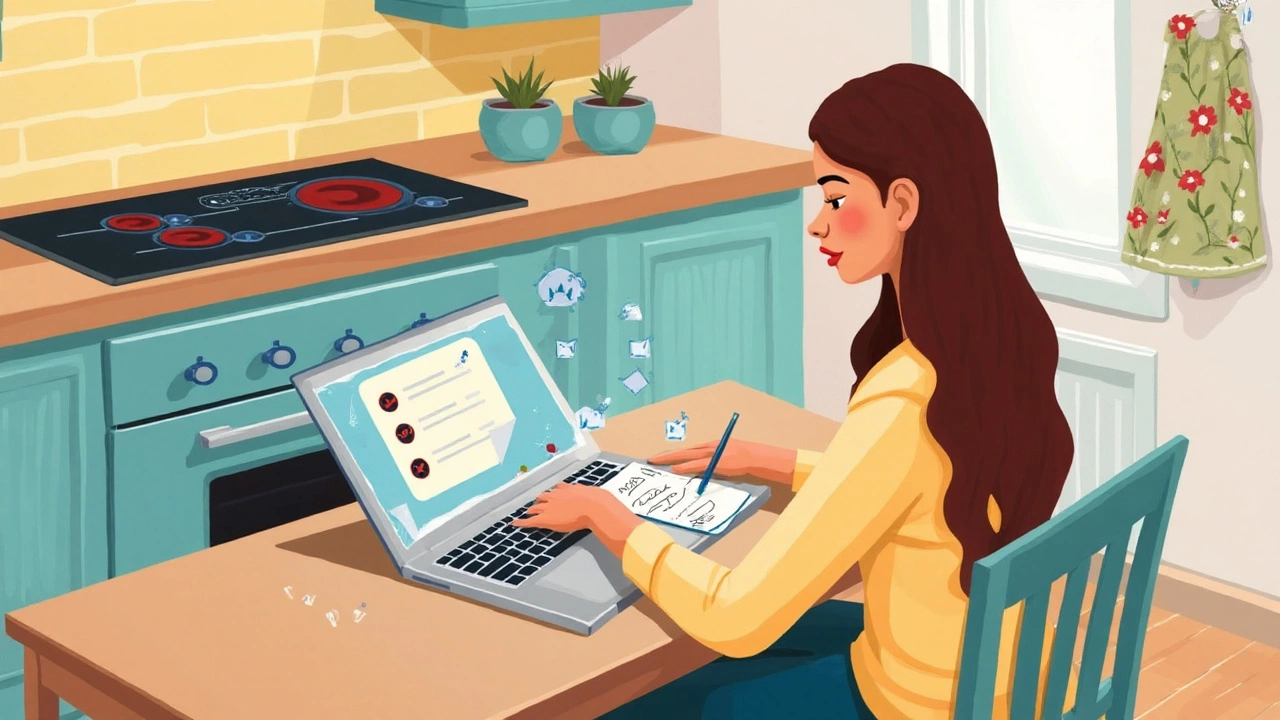How to Reset an Electric Hob: Step-by-Step Troubleshooting Guide
 Aug, 7 2025
Aug, 7 2025
Think an electric hob is just an easy plug-and-play appliance? Hold that thought. Behind that shiny glass, there’s some sneaky tech working overtime. When the hob decides to call it quits or throws an error code your way, most folks fumble around, pressing random buttons and hoping for a miracle. You can avoid that frustration. Resetting an electric hob isn’t always magic, but it can usually get you out of a sticky situation—fast. The trick is knowing what makes your hob tick, why it sometimes acts up, and which steps work for a proper reset (so you don’t accidentally kill your bacon and eggs... again).
Why Do Electric Hobs Need a Reset?
Think about the jobs you expect from your electric hob: rapid heating, precise simmering, automatic shut-off, child locks, and sensors that stop pans boiling over. With so many brains doing the work, sometimes a glitch sneaks in. It could be a power surge, a busy socket, or a spill that makes the touch controls freak out. Most electric hobs have a built-in safety program—cut the power, display some mysterious combination of letters, then refuse to play nice until you show them who’s boss with a reset.
What’s the difference between a serious fault and a momentary hiccup? If you see classic error codes like ‘E0,' ‘E1,' or ‘F,’ your hob almost always wants a reset first before a pro gets called in. Fun fact: the European Union reported in 2023 that 27% of all home appliance service calls were due to issues software resets could actually fix at home. So you’re not alone in this soup.
When a hob acts weird, the symptoms stand out. Maybe the buttons don’t respond, the heating rings flash and then shut off, or everything just goes dead. Don’t be too quick to panic—nine times out of ten, the root cause is simple: moisture under the glass, power interruptions, or mixed-up commands from the touch panel. Kids love pressing every button at once; that alone causes more resets than you’d think.
There’s also the matter of safety. Modern hobs constantly monitor for overheating or voltage inconsistencies. If they spot danger, they’ll lock down to avoid causing fires or shocks. The hob is just playing it safe—and it expects you to sort things out. Blurting out warnings or error codes is actually helpful, but it sure feels annoying when you’re trying to rustle up breakfast. Makes you wonder how many eggs get burnt each year due to this kind of appliance tantrum.
Manufacturers use similar reset tricks, but each brand might add a twist. Bosch could need one type of power cycle, while AEG or Neff might insist on a touch-sequence or holding a certain button. Not paying attention to these small details jams up a lot of repair jobs. So, it pays to know your own hob’s quirks. Want a shortcut? Always check the manufacturer's support page or manual. But in most cases, you don’t even need it—the universal reset steps work for about 80% of error moments out there.
| Common Error Codes | Meaning | Typical Reset Action |
|---|---|---|
| E0 | Panel not detected | Power cycle |
| E1 | Overheating | Cooldown & reset |
| E6 | Control board signal lost | Disconnect, wait, reconnect |
| F | Generic fault | Standard reset |
Ever notice that your hob flashes error codes after you clean up a spill? Water—especially sugary or salty water—can confuse touch sensors. It’s almost like the hob thinks someone’s stuck their whole hand on every button. So keeping the surface dry and only cleaning when the power is off can actually prevent reset dramas entirely.

Step-by-Step Guide: How to Reset an Electric Hob
People often overcomplicate resets. You don’t need special tools, coding skills, or an extra pair of hands. The most effective method uses a simple combination of patience and button know-how. Here’s the full breakdown:
- Switch off the hob at the mains.
Find the wall socket or circuit breaker feeding your hob. Don’t just turn off the hob with its own controls—a hardware reset needs a proper power cut. - Wait at least 60 seconds.
Your mind wants you to hurry, but wait the full minute. This lets energy drain and the system cool down. A short wait is the difference between a failed reset and a clean comeback. - Switch the power back on.
- Touch and hold the main 'on' button for 5-10 seconds—sometimes a gentle beep or light will pop up when you do this right.
- If your hob uses touch controls, check if there’s a ‘lock’ button blinking or active. If yes, press and hold the 'lock' key for 5 seconds. This often deactivates unwanted locks.
- If error codes still flash, consult your model's manual for special combinations—on some hobs, holding the + and – temperature or timer buttons for a few seconds will reset software glitches.
- For recurring errors, inspect plugs, sockets, and fuses. Power problems can make even the best reset fail again and again.
- Clean the panel and surface if you see any moisture, grease, or food spills. Use a dry cloth—avoid too much cleaner, as sensitive touch panels hate being wet or oily.
Some brands bake in more stubborn locks. Samsung and Siemens, for example, may require you to unplug for 15 minutes if there’s a power surge or brownout. Older models might stick on standby even after a reset; in that case, repeat the above, but up the waiting time to around 10 minutes just to play it safe.
If you’re still stuck, don’t forget the classic old-school trick: unplug, leave overnight, and reconnect in the morning. There’s a reason pros keep that one as a last resort—it really does clear out hidden state errors. Just make sure you’re not cutting off power to a connected oven or other kitchen gear you still need.
Hobs with advanced induction tech sometimes behave like moody teenagers. They’ll demand a reset after storms (especially in areas with dodgy power grids) or when you’ve tripped a breaker. Keeping a surge protector on your kitchen sockets actually saves you from some headaches. A 2024 survey from Which? UK found that owners with proper surge protection reported 37% fewer resets on their electric hobs.
Been seeing resets more and more? That’s a sign your hob’s control board or sensors might be wearing out. If you’ve hit the reset dance five times in a month, or if you see scorch marks or funny smells from the panel, it’s probably time to call a proper repair pro. Otherwise, regular resets solve most day-to-day headaches with modern glass-top hobs.

Extra Tips, Tricks, and Troubleshooting Secrets
Don’t believe the myth that resets are only for geeks. Your hob’s reset function is as basic as hitting ‘restart’ on your smartphone. But there’s more to a happy hob than just resets. Here’s how to go the extra mile:
- Regularly clean under and around your hob, not just the glass. Hidden grease or crumbs can trap heat and mess with sensors, leading to more shutdowns and resets.
- If your hob resets itself after you boil a big pot of pasta, there might be ventilation issues. Make sure nothing’s blocking the cooling fans or vents underneath. A blocked vent can fool sensors into thinking the hob is overheating, even if it’s not.
- Check the power cord and plug for wear. Hairline cracks mean it’s time to get a new cable before resets turn into full-blown shutdowns.
- For homes with dodgy electrics (think lots of flickering lights when the washing machine runs), consider an electrician to check your kitchen circuit. Weak or unstable voltage is one of the main reasons resets become a way of life.
- Don’t ignore repeated error codes. If your hob shows the same code even after a proper reset, the control board or sensor might need expert help. Don’t gamble with random pokes if the manual doesn’t list your error—it’s a safety net, not a guessing game.
- Teach housemates and kids how to reset the hob. Saves time, arguments, and half-cooked meals when you’re not there.
- Want fewer resets in the future? Keep a microfiber cloth nearby and wipe the panel every day. Spills and crumbs lead the pack for causing accidental lockouts.
If your hob is still within warranty, most brands cover recurring reset-related problems, especially for models less than two years old. Keep your purchase records handy when you talk to support—the more information you have, the quicker you get a replacement or a fix.
Here’s a quick cheat sheet of things people mess up:
- Leaving the hob unplugged for only a second or two; not nearly long enough for a true reset.
- Touching several buttons at once during a reset—this can trigger a demo or child lock instead.
- Ignoring flashes or beeps after attempted resets—they actually do mean something (usually a lock or an unfinished cycle).
- Forgetting to restart timers or re-programmed heat zones after a reset. The hob won’t magically know what you meant before the error.
The future isn’t all doom and gloom. Smart hobs on the market since 2024 can pair with phone apps, showing diagnostics and letting you run resets straight from your device—and a growing number offer self-diagnosis updates, so resets are less likely to become a chore. But for now, the basics still work. Stay patient, follow the practical steps, and treat the glass panel like you would your phone screen—gently. With a proper reset and a little regular TLC, your hob will be back to sizzling and boiling as it should, with fewer digital tantrums messing up your next meal.
